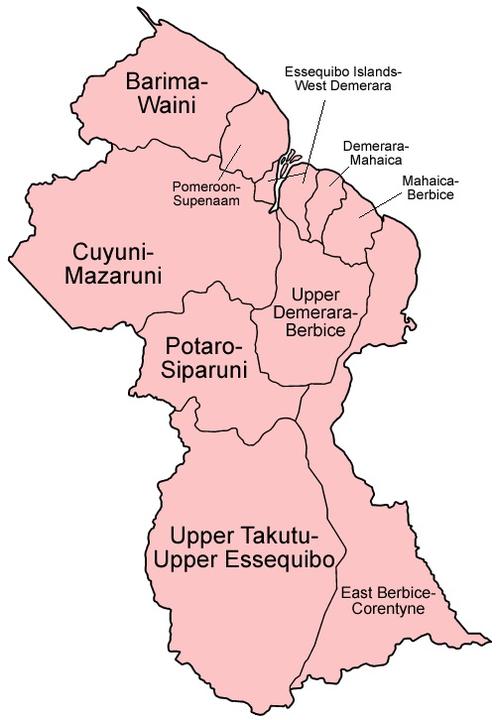Google has developed a map with information based primarily on version 2 of NASA’s Shuttle Radar Topography Mission (SRTM) that depicts the effects of flooding on Guyana with various rising sea levels.
The maps shows that a two meter sea level rise will create uninhabitable conditions for much of Guyana coastline from the Essequibo regions to Courantyne, and as far as 20 miles inland in the Demerara and Berbice and Courantyne regions.
Google has developed a map with information based primarily on version 2 of NASA’s Shuttle Radar Topography Mission (SRTM) that depicts the effects of flooding on Guyana with various rising sea levels.
The maps shows that a two meter sea level rise will create uninhabitable conditions for much of Guyana coastline from the Essequibo regions to Courantyne, and as far as 20 miles inland in the Demerara and Berbice and Courantyne regions.
Leaving it up to the scientist and world organizations to mitigate Guyana’s risks is not a feasible solution therefore the Government of Guyana must start making decisions to relocate critical infrastructure and inhabitants to more secure locations while we are in control of the events rather than when the events are driving the agenda.
See interactive map below for more info or view on The Google site
The map shown above allows you to explore the regions of the Earth that are most vulnerable to sea level rise.
As with other Google Maps, you can click-and-drag the window to scroll or double click to zoom.
As global warming progresses, sea level is expected to rise primarily due to the melting of continental ice sheets in Greenland and Antarctica. However, the ultimate amount of flooding is highly uncertain. A full deglaciation of both poles would raise sea level as much as ~65 meters (210 feet), though it is very likely that the ultimate sea level rise will be only a fraction of this possible total.
During the twentieth century, sea level rose 20 cm. It is predicted that sea level rise will accelerate during the twenty-first century, but many model predictions still foresee a sea level rise of less than 1 additional meter by 2100. The greatest uncertainty in these predictions is the role of ice streams and iceberg calving from the major ice sheets. Current models are unable to predict the degree by which ice streams may accelerate in response to warming. By one estimate, the glacial outflow from Greenland increased 200% from 1996 to 2005. This increase in Greenland’s outflow, if sustained, would add only ~3.5 cm to sea level by 2100. However, since this large increase was apparently triggered by relatively mild warming, the IPCC is unable to rule out dramatic further increases in outflow. A further ten-fold increase in glacial outflow and corresponding increases in the glacial outflow of Antarctica could effectively double the total mass loss through 2100. Even so, the likely scenarios for twenty-first century sea level rise due to unrestrained global warming remain less than 2 m.
However, even if global temperatures stabilize in 2100, the full magnitude of sea level rise is expected to take far longer to develop. By one estimate, carbon dioxide stabilization at 1100 ppmv (four times pre-industrial levels) would still only result in a 60% mass loss in Greenland after 1000 years of melting, and an additional 2000 years to melt the remainder.[7] (This estimate does not include the potential impact of ice stream acceleration.) The sheer size of the ice sheets involved essentially guarantee that the melting component of sea level rise will progress slowly.
Regardless of the time scale involved, an analogy to the previous interglacial suggests that a few degrees Celsius of sustained warming can cause enough melting to raise sea level 4-6 m before the ice sheets reach equilibrium. This level of warming is likely to be achieved or even exceeded by 2100 in the absence of intervention to combat climate change, though as above, it would take far longer to realize the full sea level change.





